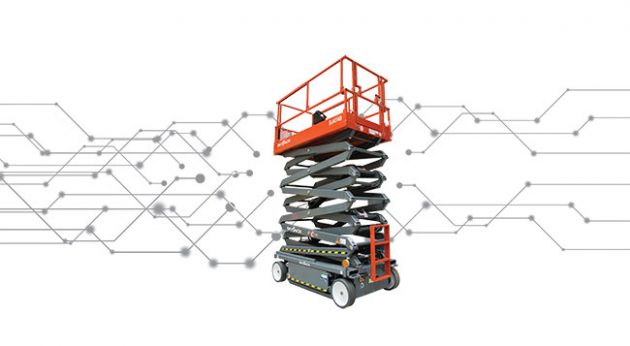
Telematics – when more data is the enemy of good data
By David Swan, product manager for technology and innovation, Skyjack
Features Tech tips data skyjack telematicsThe problem these days is too much information.
 Early telematics solutions sought to give as much information as possible. But a flood of data quickly leads to overload and the user just tunes out. Photo: Getty Images
Early telematics solutions sought to give as much information as possible. But a flood of data quickly leads to overload and the user just tunes out. Photo: Getty Images When it comes to telematics solutions, less can be more if the less that you’re getting is properly analyzed and effectively communicated. Our industry needed something that targets the right data, and something designed specifically with input from an OEM has been proven to be the best solution for off-highway fleets.
Data Delivery
Companies that were getting into telematics for off-highway early on went one of two ways: they focused on what worked for on-road telematics products, placing a large focus on speed, location, and hour meters; or they just completely unleashed the data and pummeled their customers with every data point they could generate off of the machine.
Finding the middle ground between these two philosophies can make a huge difference in the value that’s provided by an off-highway telematics product. Getting mission-critical data that’s delivered in a way that fleet managers and service personnel can understand is the only way they’ll be able to take action. Having an OEM with a hand in the design process is the most effective way to ensure fleet managers get data that’s accurate and most important to them.
Identifying What’s Important
Once a telematics solution has been set up for success, with a well-rounded development team behind it, fleet managers can start pinpointing what’s most important to their business. Data like battery life, historical charging patterns, and control orientation, can help service technicians better respond to the end user through remote visibility. These data points can contribute to fewer on-site visits, which means less time spent idle, and getting teams on the job site back to work sooner.
OEMs like Skyjack work with customers to determine what data is most important, and engineering the equipment to be able to deliver on those data points. This enables fleet managers to better plan scheduled service, increase billing precision, and increase utilization on its equipment.

Skip the Data Overload
It can seem like getting more data points from a telematics product means that you’re getting more out of it, but that’s just wrong. There can be millions of data points flowing through telematics products from its equipment. It would hiring additional staff for fleet managers to be analyze all of the data that’s transmitted and identify what it means, it would not only take weeks to determine a solution to a problem, but it would also be incredibly expensive.
The best way to pinpoint the data that’s most important to you and your business is to work with your OEM and your service provider – sometimes they’re one in the same – and talk about your goals. What data do you want your telematics product to provide, and which processes do you want to improve? Getting a solution that answers those two questions is the key to getting the most effective solution for your business.
Print this page
Leave a Reply